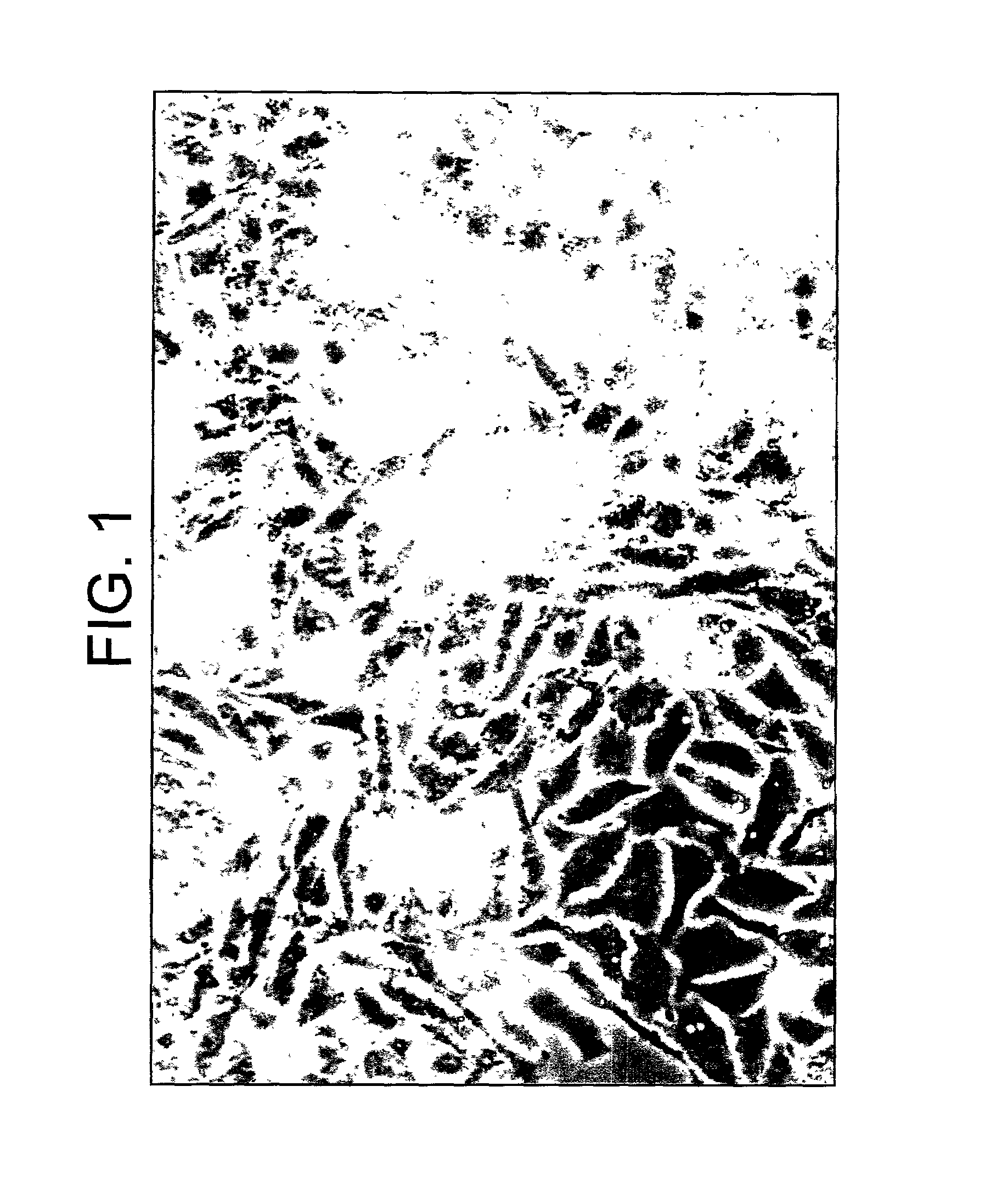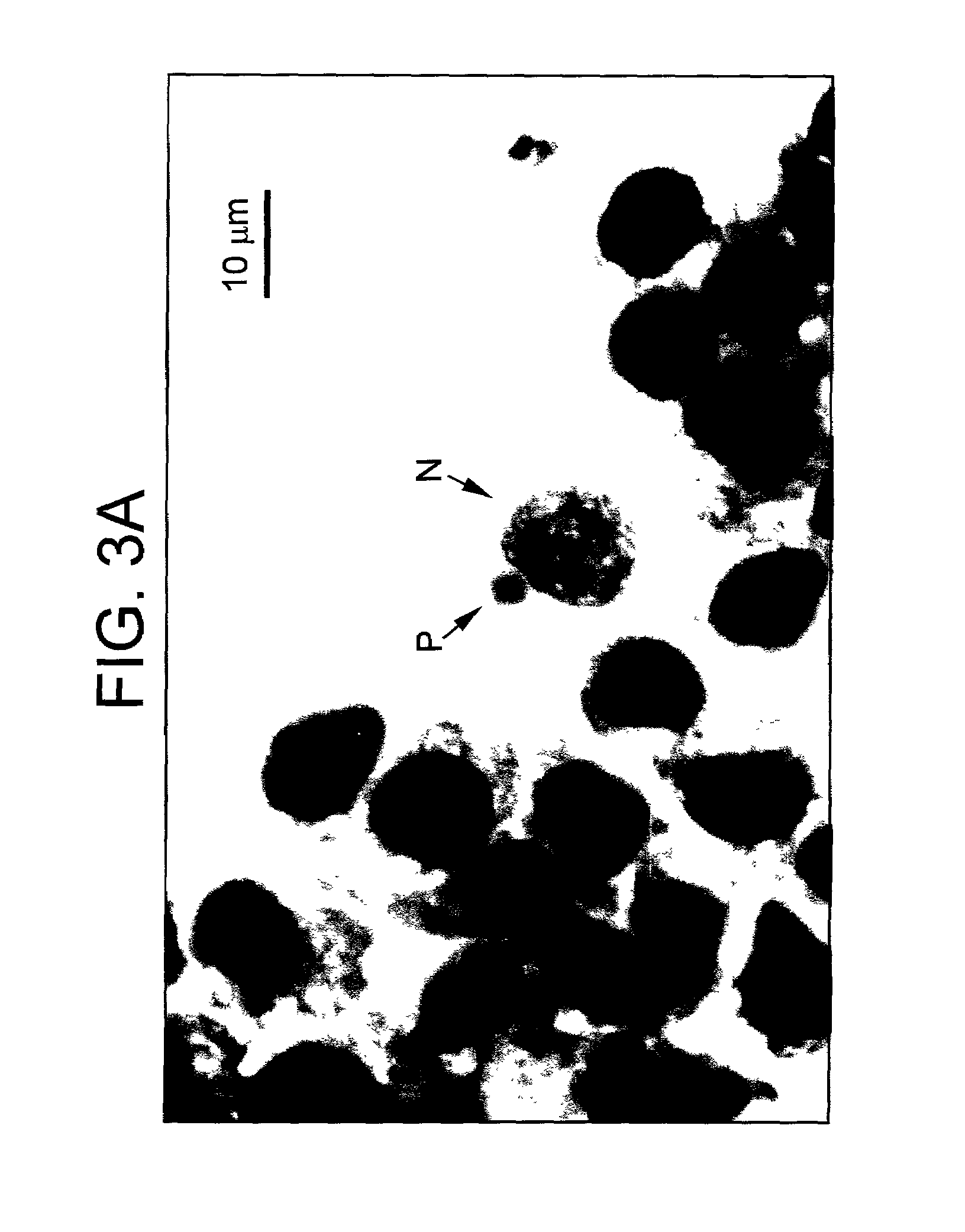Human liver cell line
a human liver and cell line technology, applied in the field of human liver cell lines, can solve the problems of malaria being one of the most serious health risks, no efficient in vitro human liver model is available to support vaccine and drug development, and no effective human liver model is availabl
- Summary
- Abstract
- Description
- Claims
- Application Information
AI Technical Summary
Benefits of technology
Problems solved by technology
Method used
Image
Examples
example 1
Establishment of Human Hepatocyte Line (HC-04)
[0062]Source of liver cells: liver biopsy sample was provided by the Department of Surgery, Faculty of Medicine, Ramathibodi Hospital, Mahidol University, Bangkok, Thailand. The Department of Surgery at Ramathibodi Hospital routinely collects a liver biopsy sample and removes a portion of the liver when a patient has liver disease. The liver tissue was normally sent to the laboratory for pathological examination of the tissue. Excess liver tissue that was not used in the pathological examination was donated to AFRMS.
[0063]The method of liver cell preparation and culture was modified from Roberts et al, 1994, Hepatology 19, 1390–1399 and Kono et al., 1995, Experimental Cell Research 221, 478–485. Screening for development of exoerythrocytic stage of human malaria was modified from Karnasuta et al., 1995, Am. J. Trop. Med. Hyg. 53, 607–11.
[0064]Liver tissue was aseptically kept at 4° C. in transporting medium (30 ml 1×RPMI 1640, 25 mg gent...
example 2
Development of Exoerythrocytic Stage Malaria
[0065]The liver cells (HC-04) were plated into 96-well tissue culture plates and maintained in complete culture medium supplemented with antibiotics and fetal bovine serum until confluent at 37° C. in an incubator with 95% air 5% CO2. Anopheles dirus (Bangkok colony) mosquitoes were infected by membrane feeding using cultured P. falciparum gametocytes from a Thai isolate or Plasmodium vivax infected blood from patients. Malaria parasites (sporozoites) were harvested from salivary gland of malaria infected mosquitoes. Sporozoites were harvested three weeks post-feeding using semi-sterile techniques. Sporozoites were prepared in culture medium supplement with antibiotics. The sporozoites were added to the liver cells previously cultured for 24–48 hours. Malaria sporozoites are added to confluent cells at 1:1 ratio. Medium was changed 4 hr after sporozoite inoculation and every 48 hr. Development of liver-stage parasite was examined on days 4...
example 3
Characterization of Hepatocyte Cell Line
[0066]Human chromosomes from different passages of HC-04 cells were studied. The major characters from cells prepared from different passages were similar. These cells are all in the hyperdiploid range (2n=48–50) (See FIG. 2). Abnormal chromosomes including chromosome 1p deletion, chromosome 6 derivative, triplet of chromosome 7 and chromosome 15 derivative.
[0067]Hepatocellular functions such as G6Pase activity, protein secretion such as albumin, alpha-fetoprotein and transferrin, and function of cytochromes P450 2A1 (Roberts et al., 1994, supra) were identified in this cell line. None of the receptors of hepatitis B, hepatitis A and hepatitis E virus were found on the cell surface. MHC class I, MHC class II, and IFN-gamma receptor were presented on HC-04 cell surface.
[0068]Additional characterization of the cell line, e.g. additional cytochrome P450 profile and drug metabolizing capability of the cells, is in progress.
PUM
| Property | Measurement | Unit |
|---|---|---|
| resistance | aaaaa | aaaaa |
| density | aaaaa | aaaaa |
| temperature | aaaaa | aaaaa |
Abstract
Description
Claims
Application Information
 Login to View More
Login to View More - R&D
- Intellectual Property
- Life Sciences
- Materials
- Tech Scout
- Unparalleled Data Quality
- Higher Quality Content
- 60% Fewer Hallucinations
Browse by: Latest US Patents, China's latest patents, Technical Efficacy Thesaurus, Application Domain, Technology Topic, Popular Technical Reports.
© 2025 PatSnap. All rights reserved.Legal|Privacy policy|Modern Slavery Act Transparency Statement|Sitemap|About US| Contact US: help@patsnap.com



